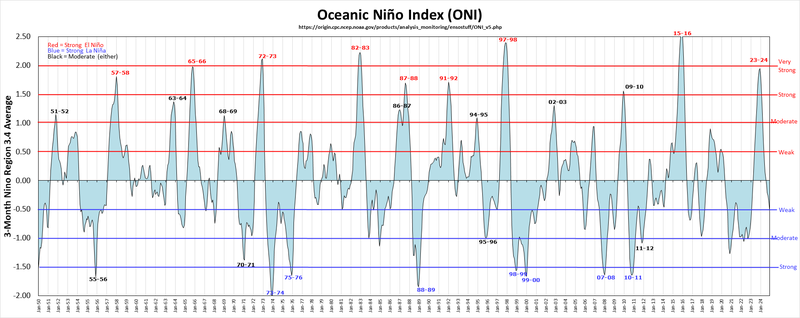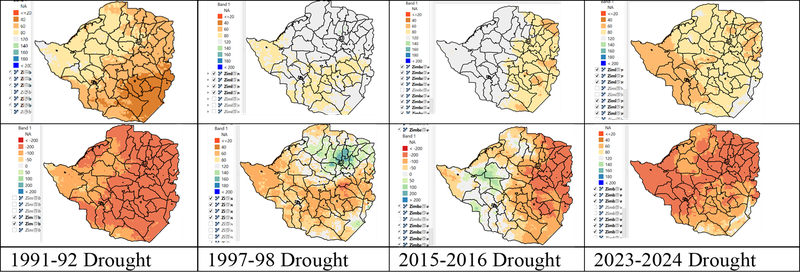Drought Occurrence in Zimbabwe
Recent Trends and Historical Extremes
Over the past decade, Zimbabwe has faced recurring droughts, exacerbated by climate change and shifting rainfall patterns. These droughts have severely impacted agriculture, water supplies, and food security in a country where over 60% of the population relies on rain-fed farming.
The main climate drivers in Zimbabwe are the three ENSOs (El Niño Southern Oscillation, La Niña, El Niño, and Neutral phases) and the IOD (Indian Ocean Dipole) as the global climate drivers, while the local drivers are the ITCZ, the Westerly Cloud Bands, and the Subtropical High-pressure systems.
Due to climate change, the frequency of drought occurrences and their severity have increased. The temperatures have also been on the rise, leading to excess heating in the atmosphere, which has increased the intensity and frequency of extreme weather events such as droughts, heatwaves, floods, and cyclones. All these hazards have affected Zimbabwe like any other country in the globe.
Recently, the country was hit by a severe drought during the 2023-24 season, which was one of the worst droughts in the last 30 years. This drought was declared by the President of Zimbabwe, H.E. Dr. E.D. Mnangagwa, in April 2024. This was induced by the El Niño conditions.

ENSO Phases | Source: Golden Gate Weather Services (https://ggweather.com/enso/oni.png)
The most severe droughts since 1990 occurred when the El Niño indices were positive, which include 1991-92, 1997-98, 2015-16, and 2023-24. These are the major droughts which were experienced in Zimbabwe. In terms of the severity of the El Niño indices, 1991-92 was just above strong magnitude, 1997-98 was above very strong, while in 2023-24, it was very strong. The impacts on the rainfall distribution are as shown on Page 6. In terms of the impacts of these El Niño severities on the rainfall distribution in Zimbabwe, they were different. The 1991-92 and 2023-24 droughts were the most severe since 1990, and they were very similar in terms of the rainfall anomalies.

Zimbabwe Droughts 1991 - 2024
The most severe droughts since 1990 occurred when the El Niño indices were positive, which include 1991-92, 1997-98, 2015-16, and 2023-24. These are the major droughts which were experienced in Zimbabwe. In terms of the severity of the El Niño indices, 1991-92 was just above strong magnitude, 1997-98 was above very strong, while in 2023-24, it was very strong. The impacts on the rainfall distribution are as shown on Page 6. In terms of the impacts of these El Niño severities on the rainfall distribution in Zimbabwe, they were different. The 1991-92 and 2023-24 droughts were the most severe since 1990, and they were very similar in terms of the rainfall anomalies.
Meteorological Services Department, 2025

